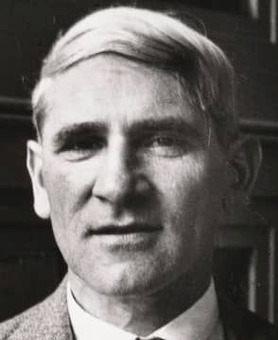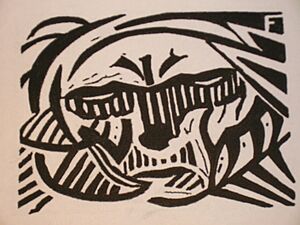Otto Freundlich facts for kids
Quick facts for kids
Otto Freundlich
|
|
|---|---|
 |
|
| Born | 10 July 1878 |
| Died | 9 March 1943 (aged 64) Majdanek concentration camp, General Government (German-occupied Poland)
|
| Nationality | German |
| Known for | Painting and sculpture |
Otto Freundlich (born July 10, 1878 – died March 9, 1943) was a German artist. He was a painter and sculptor of Jewish heritage. Otto Freundlich was one of the first artists to create abstract art in Western painting. This means his art didn't always show things exactly as they looked in real life. He also really liked cubism, another art style that uses geometric shapes. Sadly, he was killed at a place called Majdanek concentration camp during the Holocaust.
Otto Freundlich's Life and Art
Otto Freundlich was born in a town called Stolp in Prussia, which is now part of Poland. Before he became an artist, he actually studied dentistry! But he soon decided that art was his true calling.
In 1908, he moved to Paris, France, a famous city for artists. He lived in a place called Bateau Lavoir in Montmartre, which was a home and studio for many artists. He was even near famous artists like Pablo Picasso.
Otto returned to Germany in 1914. After World War I, he became involved in politics and joined a group called the November Group. This group was made up of artists who wanted to change society after the war. In 1919, he helped organize one of the first Dada art shows in Cologne, Germany. Dada was a very unusual art movement that challenged traditional ideas about art. Later, in 1925, he joined another art group called Abstraction-Création.
Facing the Nazis
After 1925, Otto Freundlich mostly lived and worked in France. In Germany, his art was strongly disliked by the Nazis. They called his work "degenerate art," which was a term they used for modern art they didn't approve of, especially art by Jewish artists or those who didn't follow their strict rules.
His artworks were taken down from public displays. Some of his pieces were even shown in a terrible Nazi exhibition of "degenerate art." His large sculpture, Der Neue Mensch (The New Human), was featured on the cover of the exhibition catalog. This sculpture was never found again and is believed to have been destroyed. However, one of his other sculptures was found during an excavation in Berlin and is now displayed in a museum.
While in Paris, he joined a group called the Union des Artistes Allemands Libres, which was for German artists living freely outside of Nazi Germany.
During World War II, when Germany occupied France, Otto and his wife moved to the Pyrenees mountains to hide. He was arrested by the Vichy authorities, who were a French government that worked with the Nazis. For a short time, he was released thanks to the help of Pablo Picasso. But in 1943, he was arrested again and sent to Majdanek concentration camp. He was murdered there on the very day he arrived.
What He Left Behind
For a long time, Otto Freundlich's work was not as well-known, partly because the Nazis tried to erase his legacy. However, a documentary film called Das Geht Nur Langsam (It Takes Time) was released in 2012. This film explores his big dream: to build streets of sculptures all across Europe. These sculptures would represent his hopeful ideas for a peaceful world society. In his hometown of Stolp, there is a statue (a bust) built to remember him.
Gallery
See also
 In Spanish: Otto Freundlich para niños
In Spanish: Otto Freundlich para niños
- List of German painters









